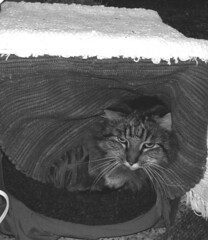 I have been noticing the subtle change of seasons--particularly the lower angle of the sunlight--and this has made me turn inward a bit more as I anticipate the arrival of fall. I do have to admit: the transition from summer to fall is one of the most difficult transitions for me each year. I try to tell myself that fall is "cozy," and it isn't until the heart of fall that I admit to myself that yes, curling up with a book in front of the fire is indeed cozy. Who cares if it's pouring rain outside. I usually mourn summer for about two months before I can enter autumn with positive intention.
I have been noticing the subtle change of seasons--particularly the lower angle of the sunlight--and this has made me turn inward a bit more as I anticipate the arrival of fall. I do have to admit: the transition from summer to fall is one of the most difficult transitions for me each year. I try to tell myself that fall is "cozy," and it isn't until the heart of fall that I admit to myself that yes, curling up with a book in front of the fire is indeed cozy. Who cares if it's pouring rain outside. I usually mourn summer for about two months before I can enter autumn with positive intention. Even though I covet spring and summer, what's interesting is that fall and winter really do reflect very prominent aspects of myself: introversion and reflection. So, this year, I am going to attempt to embrace (and dare I say celebrate?) the upcoming days of autumn with an open heart. And part of this process of acceptance means that I must embrace all aspects of myself -- including my dark, dank, and soggy autumnal sides. I almost think of my fall self as a "secret self," the part of me I tend to bury.
So in honor of embracing this seasonal transition and turning inward, I recommend trying Julia Cameron's "Secret Selves" exercise. In Cameron's book The Vein of Gold: A Journey to Your Creative Heart, she writes, "Each of our Secret Selves has a particular timbre that enriches the song of our life." By reflecting on aspects of yourself that are a bit hidden, you may find that these selves may benefit from reaching the light of day. Perhaps your secret tough side could surface a bit more at work when you need to create clear boundaries. Or maybe you tend to bury your soft and cuddly side, and a friend in need could use a bit of this teddy bear energy.
So, strike up your internal symphony and name at least five of your Secret Selves. The second part of the exercise is to pretend to open the closet of each of your Secret Selves. What do you find?
Here are my five "Secret Selves" I came up with for the first part of this exercise:
1. Edgy Grrl
2. Competition Jackie
3. Tough Nelly
4. Perfection Priscilla
5. Silly Sister
Whitman writes that we "contain multitudes." This autumn, who will you find inside you waiting to be listened to, nurtured, called out, or given a chance to transform and change?



